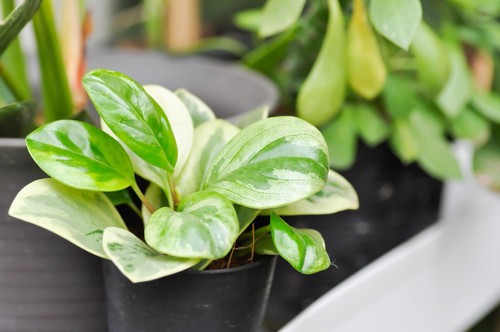Baby rubber plants are a popular choice for indoor plant enthusiasts due to their attractive foliage and low maintenance requirements. However, it can be frustrating to notice your baby rubber plant drooping, with leaves appearing wilted and unhealthy.
Understanding the causes of baby rubber plant drooping is essential to revive your plant and prevent future issues. One common cause is improper watering, with both overwatering and underwatering leading to drooping leaves.
Light and temperature needs, soil and drainage, humidity and misting, and pest and disease control are other factors that can affect the health of your baby rubber plant.
To revive a drooping baby rubber plant, it is essential to identify the underlying cause and take appropriate action. This may involve adjusting watering habits, improving lighting conditions, repotting in fresh soil, or treating pests and diseases. With proper care and attention, your baby rubber plant can thrive and add a touch of greenery to your indoor space.
Key Takeaways
- Proper watering is essential to prevent baby rubber plant drooping.
- Light and temperature, soil and drainage, humidity, and pest control can also affect plant health.
- Identifying and addressing the underlying cause is crucial for reviving a drooping baby rubber plant.
Don’t miss out on these other top posts in this category:
Understanding Baby Rubber Plant Drooping

Signs of Drooping
Baby rubber plants are known for their thick, glossy, and rubbery leaves. When these leaves start to droop, it is a sign that something is not quite right. The first sign of drooping is usually the leaves themselves. They will start to wilt and lose their firmness. Over time, the leaves will become more and more droopy and may even start to curl.
Baby Rubber Plant Drooping – 5 Common Problems
There are several reasons why a baby rubber plant may start to droop. Here are some of the most common causes:
- Overwatering: Baby rubber plants like to be kept moist, but they do not like to be waterlogged. Overwatering can lead to root rot, which can cause the plant to droop.
- Underwatering: On the other hand, if a baby rubber plant is not watered enough, it will start to droop. Make sure to water the plant regularly and keep the soil moist but not waterlogged.
- Lack of Light: Baby rubber plants need bright, indirect light to thrive. If they are not getting enough light, they may start to droop.
- Temperature Changes: Baby rubber plants are sensitive to temperature changes. If the plant is exposed to cold drafts or sudden temperature drops, it may start to droop.
- Humidity Levels: Baby rubber plants like high humidity. If the air in your home is too dry, the plant may start to droop.
It is important to identify the cause of the drooping as soon as possible and take action to correct it. This will help ensure that your baby rubber plant remains healthy and vibrant.
Watering Requirements
Baby rubber plants require consistent watering to maintain their health and prevent drooping. Overwatering can lead to waterlogged soil, which can cause root rot and other issues. Underwatering can also cause drooping and damage to the plant.
To determine when to water a baby rubber plant, it is important to consider factors such as humidity, temperature, season, weather, size of the plant and pot, ventilation, and so on. Ideally, the plant should be watered every 5 to 7 days, depending on these factors.
To check the moisture level of the soil, one can insert their fingers in the top layers of soil. If the soil feels dry, it is time to water the plant. However, it is important not to let the soil become completely dry, as this can also cause drooping.
Using a moisture meter can also be helpful in determining when to water a baby rubber plant. These devices can measure the amount of moisture in the soil and provide an accurate reading of when the plant needs to be watered.
When watering a baby rubber plant, it is important to avoid getting water on the leaves, as this can lead to disease and other issues. Water should be applied directly to the soil, and excess water should be allowed to drain away.
Light and Temperature Needs
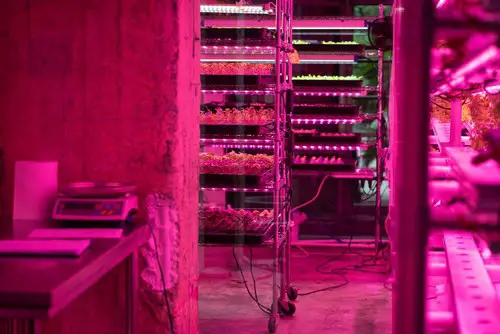
Baby rubber plants require moderate to bright, indirect light. Direct sunlight can scorch the leaves, while insufficient light can cause drooping and other issues. It’s important to find the right balance of light levels to keep the plant healthy and thriving.
If the plant is not getting enough light, it may start to droop or lean towards the light source. This can be remedied by moving the plant to a brighter location or supplementing with artificial light. On the other hand, if the plant is exposed to too much direct sunlight, the leaves may curl or burn.
Temperature is also an important factor in the health of a baby rubber plant. These plants prefer warm temperatures between 60 and 80 degrees Fahrenheit. Temperature changes and fluctuations can cause stress and lead to leaf drooping.
To keep the plant healthy, it’s important to maintain a stable environment with consistent temperatures. Avoid placing the plant near drafty windows or doors, as well as heat sources like radiators or vents.
Soil and Drainage
When it comes to the baby rubber plant, soil and drainage are crucial factors that can affect its health and growth. The plant requires well-draining soil to thrive. This means that the soil should be able to retain enough moisture to keep the plant hydrated, but not so much that it becomes waterlogged.
To ensure that the soil is well-draining, it is important to use a potting mix that is specifically designed for this purpose. The potting mix should be able to provide adequate aeration to the roots, while also allowing excess water to drain away quickly.
It is also essential to ensure that the pot has drainage holes to prevent water from accumulating in the bottom of the pot. Without proper drainage, excess water can lead to root rot and other problems that can cause the plant to droop.
When selecting soil for the baby rubber plant, it is important to consider the pH level. The plant prefers slightly acidic soil, with a pH level between 6.0 and 7.0. If the pH level is too high or too low, it can affect the plant’s ability to absorb nutrients from the soil, which can lead to drooping and other issues.
Humidity and Misting
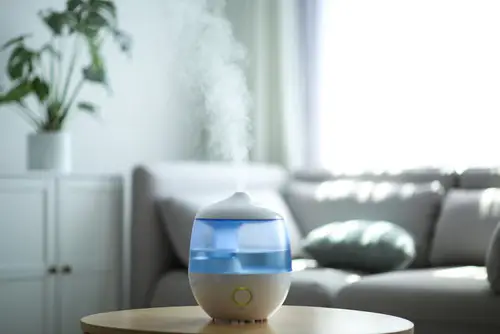
Baby rubber plants require a high level of humidity to thrive. When the air is too dry, the leaves can become droopy and wilted. To ensure the right level of humidity, it is recommended to keep the humidity around 40-50%.
One way to increase humidity is by misting the leaves with water. Misting can be done once or twice a day, depending on the humidity level and the dryness of the air. Misting can also help to remove dust and dirt from the leaves, which can improve the plant’s ability to absorb light and nutrients.
Another way to increase humidity is by placing the plant on a pebble tray. A pebble tray is a shallow dish filled with pebbles and water. The plant is placed on top of the pebbles, and the water evaporates, creating a humid environment around the plant. This method is especially useful during the winter months when the air tends to be drier.
It is important to note that misting should not be done too frequently, as it can lead to fungal growth and other problems. Overwatering should also be avoided, as it can cause root rot and other issues.
It is recommended to use room temperature water when misting and to avoid misting the leaves during the evening, as this can cause moisture to accumulate on the leaves and increase the risk of fungal growth.
Plant Care Tips
When it comes to caring for a baby rubber plant, there are a few things to keep in mind to prevent drooping and ensure healthy growth.
1. Soil and Potting
Baby rubber plants prefer well-draining soil. A loose, fertile potting mix will do well for these plants. Make sure to use a pot with drainage holes to prevent water from accumulating at the bottom, which can cause root rot.
2. Watering
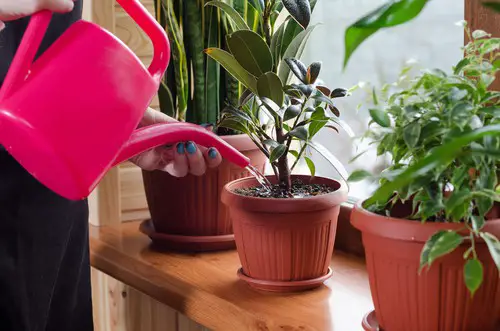
Over-watering or under-watering can both cause drooping in baby rubber plants. It’s important to water the plant only when the top inch of soil feels dry. Avoid letting the soil dry out completely or leaving the plant in standing water.
3. Lighting
Baby rubber plants prefer bright, indirect light. Direct sunlight can scorch the leaves, while too little light can cause the plant to droop. A north-facing window or filtered light is ideal.
4. Humidity
These plants prefer higher humidity levels. Misting the leaves or placing a tray of water nearby can help increase humidity levels.
5. Pruning
Regular pruning can help maintain the shape and size of the plant. Use clean, sharp scissors to remove any yellow or brown leaves, or to trim back any leggy growth.
6. Repotting
Baby rubber plants should be repotted every 2-3 years, or when the roots start to outgrow the pot. Use a pot that is one size larger than the current pot, and make sure to use fresh potting soil.
7. Propagation
Baby rubber plants can be propagated through stem cuttings. Take a cutting that is at least 3-4 inches long and has a few leaves. Remove the lower leaves and place the cutting in a pot with well-draining soil. Keep the soil moist and the cutting in bright, indirect light until roots start to form.
8. Support System
Baby rubber plants can benefit from a support system, such as a moss pole or trellis. This can help the plant grow upright and prevent drooping.
Dealing with Pests and Diseases
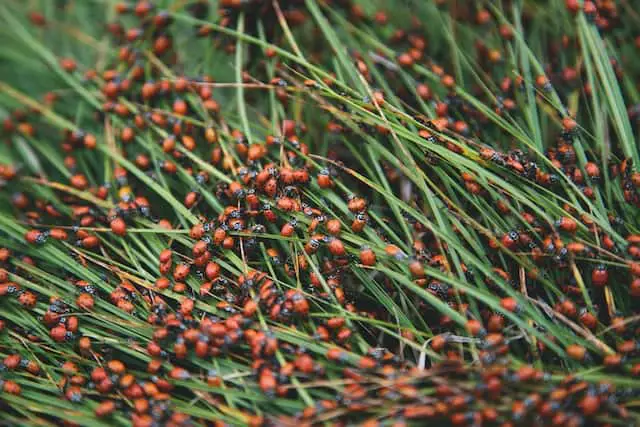
Baby rubber plants are susceptible to pests and diseases that can cause their leaves to droop. It is crucial to identify the problem early on and take appropriate measures to prevent further damage. Here are some common pests and diseases that affect baby rubber plants and how to deal with them:
Pests
Thrips
Thrips are tiny insects that can cause damage to the leaves and flowers of baby rubber plants. They feed on the sap of the plant, which can cause the leaves to turn yellow or brown and eventually fall off. To get rid of thrips, use an insecticidal soap or neem oil spray. Repeat the treatment every two weeks until the infestation is gone.
Aphids
Aphids are another common pest that can infest baby rubber plants. They are small, pear-shaped insects that suck the sap out of the plant, causing the leaves to curl and turn yellow.
To get rid of aphids, use a solution of water and dish soap or a neem oil spray. Spray the affected area thoroughly, including the undersides of the leaves. Repeat the treatment every two weeks until the infestation is gone.
Spider Mites
Spider mites are tiny pests that can cause significant damage to baby rubber plants. They feed on the sap of the plant, causing the leaves to turn yellow and eventually fall off.
To get rid of spider mites, use a neem oil spray or insecticidal soap. Spray the affected area thoroughly, including the undersides of the leaves. Repeat the treatment every two weeks until the infestation is gone.
Diseases
Root Rot
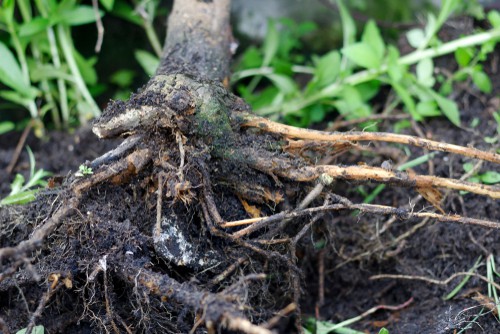
Overwatering can cause root rot in baby rubber plants, which can cause the leaves to droop and eventually die. To prevent root rot, make sure the soil is well-draining and that the plant is not sitting in water. If root rot has already set in, remove the plant from the pot, trim any damaged roots, and repot the plant in fresh soil.
Pest Infestation
A severe pest infestation can weaken baby rubber plants, making them more susceptible to diseases. To prevent pest infestations, keep the plant in a clean and well-ventilated area, and inspect the plant regularly for signs of pests. If you notice any pests, treat them immediately to prevent further damage to the plant.
Troubleshooting Common Problems
When it comes to baby rubber plants, there are a few common problems that can cause drooping. Here are some troubleshooting tips to help you identify and fix the issue:
1. Improper Watering
One of the main causes of drooping in baby rubber plants is improper watering. Overwatering can lead to root rot, while underwatering can cause the plant to dry out. To determine if your plant needs water, check the soil by touching it.
If the soil feels dry, it needs water, but if it feels soggy, you should allow the plant to dry out before watering it again. It’s important to water your baby rubber plant consistently, but not too frequently.
2. Improper Lighting
Rubber plants like bright, indirect light, but not direct sunlight. If your plant is in harsh sun or away from light for more than 2 to 3 days, the leaves can droop. A brilliant spot ensured by a sheer window decoration is perfect for rubber plants. If you notice your plant leaning towards the light source, rotate it periodically to ensure even growth.
3. Stress and Transplant Shock
If your baby rubber plant has recently been transplanted or moved to a new location, it may experience stress or transplant shock. This can cause drooping, stunted growth, or even damage to the plant. To avoid this, make sure to acclimate your plant to its new environment slowly, and avoid moving it around too much.
4. Aging
As rubber plants age, they may naturally begin to droop or lean. This is normal and can be addressed by pruning the plant to encourage new growth. If your plant is becoming leggy, consider cutting back some of the stems to promote bushier growth.
5. Damage and Burn
If your baby rubber plant has been damaged or burned, it may begin to droop or develop brown or black spots. This can be caused by exposure to extreme temperatures, pests, or chemicals. If you notice any damage, remove the affected leaves or stems and treat the plant accordingly.
6. Mushy or Crispy Leaves
If your baby rubber plant’s leaves are mushy or crispy, it may be a sign of over or underwatering. Check the soil and adjust your watering schedule accordingly. If the plant is consistently overwatered, it may develop root rot, which can be fatal.
By identifying and addressing these common problems, you can help your baby rubber plant thrive and avoid drooping.
Reviving a Drooping Baby Rubber Plant
If your baby rubber plant is drooping, it may be a sign that it is not getting the right care it needs. Here are some steps you can take to revive your drooping baby rubber plant:
1. Check the Soil and Potting
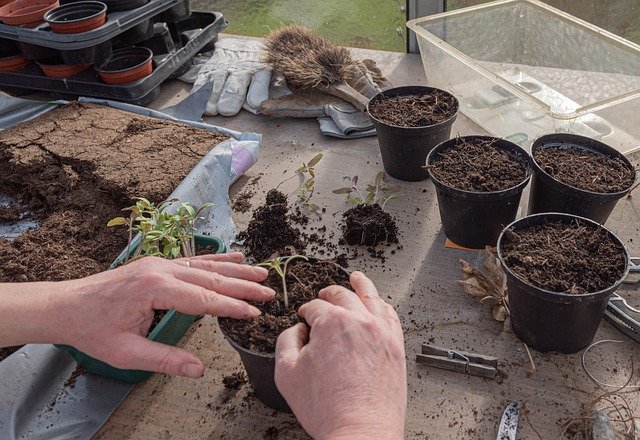
The first step to reviving a drooping baby rubber plant is to check the soil and the potting. Make sure the soil is well-draining and that the pot has drainage holes. If the soil is too compact, add some sand to it to improve drainage. Check the pot size, and make sure it is not too small for the plant.
2. Watering and Moisture
Baby rubber plants are succulent, and they don’t like too much moisture. Overwatering can cause root rot, which can lead to drooping. Make sure the soil is dry before watering your plant, and don’t let the soil stay wet for too long. Avoid using tap water, as it may contain chemicals that can harm the plant. Use rainwater or distilled water instead.
3. Fertilizer and Nutrients
Baby rubber plants don’t need a lot of fertilizer, and over-fertilization can cause drooping. Use a balanced fertilizer once a month during the growing season. Make sure the fertilizer has the right nutrients, such as nitrogen, phosphorus, and potassium.
4. Lack of Light
Baby rubber plants need bright, indirect light to thrive. If your plant is not getting enough light, it may droop. Move your plant to a brighter location, but avoid direct sunlight, as it can scorch the foliage.
5. Cold Air and Edema
Baby rubber plants are native to the rainforest, and they don’t like cold air. If your plant is exposed to cold air, it may develop edema, which can cause drooping. Move your plant away from air conditioners or cold drafts.
6. Variegated and Decorative Varieties
Variegated and decorative varieties of baby rubber plants may require more care than the regular green variety. Make sure you are giving your plant the right care it needs, such as the right amount of light and moisture.
Reviving a drooping baby rubber plant requires patience and care. Follow these steps, and your plant should start to perk up soon.
Frequently Asked Questions
How do you revive a droopy rubber plant?
To revive a droopy rubber plant, the first thing to do is to check the soil moisture. Overwatering or underwatering can cause the leaves to droop. If the soil is too dry, water the plant thoroughly and let it drain.
If the soil is too wet, allow it to dry out before watering again. Additionally, ensure the plant is receiving the right amount of light and temperature. Prune any damaged or yellow leaves to promote new growth.
Why is my repotted rubber plant drooping?
If your repotted rubber plant is drooping, it might be due to transplant shock. When repotting, the plant’s roots can be damaged, which can cause stress and lead to drooping. Give the plant time to adjust to its new environment, and make sure it’s receiving the right amount of water, light, and temperature.
Overwatering can also cause drooping, so check the soil moisture and adjust watering as needed.
How to tell the difference between overwatering and underwatering rubber plant?
Overwatering and underwatering can both cause rubber plant leaves to droop, but there are some differences. Overwatering can cause the leaves to turn yellow and mushy, while underwatering can cause the leaves to turn brown and crispy. Additionally, overwatered soil tends to be soggy and smelly, while underwatered soil is dry and hard.
To avoid both issues, make sure to water the plant when the top 1-2 inches of soil feel dry, and use a well-draining soil that retains necessary moisture content.
Can a rubber plant recover from overwatering?
Yes, a rubber plant can recover from overwatering if caught early. The first step is to stop watering the plant and let the soil dry out. Prune any damaged or yellow leaves to promote new growth. If the roots are rotting, repot the plant in fresh, well-draining soil. Make sure to adjust watering habits to avoid overwatering in the future.
What causes rubber plant leaves to droop and curl?
Rubber plant leaves can droop and curl due to various reasons, including overwatering, underwatering, low humidity, pests, and disease. Low light and temperature stress can also cause drooping. Check the soil moisture, humidity levels, and inspect the plant for pests or disease. Adjust watering, lighting, and temperature as needed.
What are some signs of a healthy rubber plant?
A healthy rubber plant has glossy, dark green leaves that are firm and upright. The plant should have new growth and be free of pests or disease. The soil should be moist but well-draining, and the plant should be receiving the right amount of light and temperature. Regular pruning and cleaning can help promote new growth and keep the plant healthy.

Hey, I’m Lisa and I’ve been an avid gardener for over 30 years. I love writing, talking and living in the garden! Feel free to connect with me on my socials below

